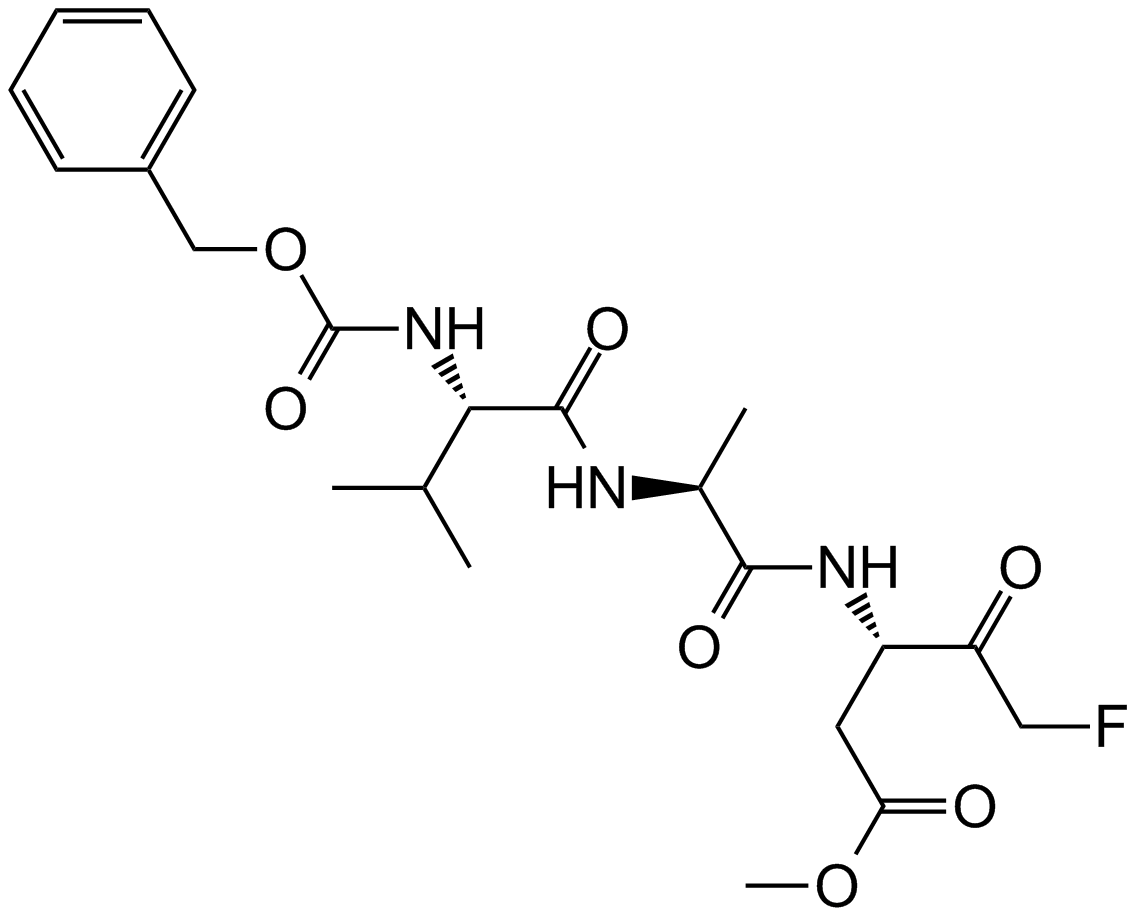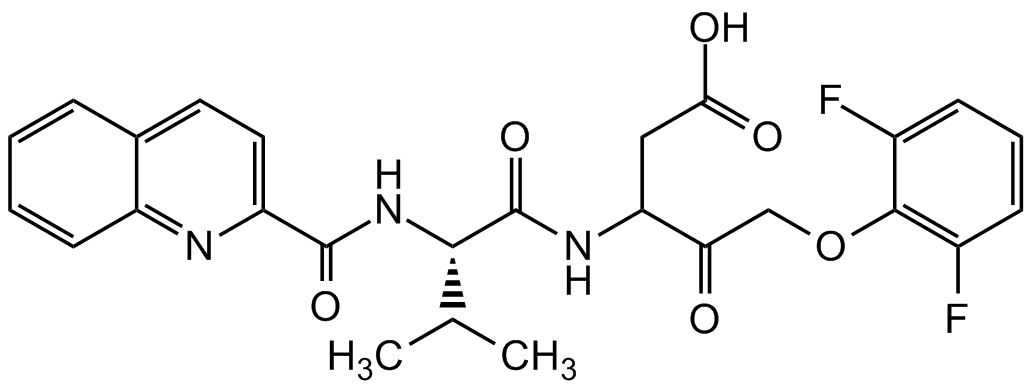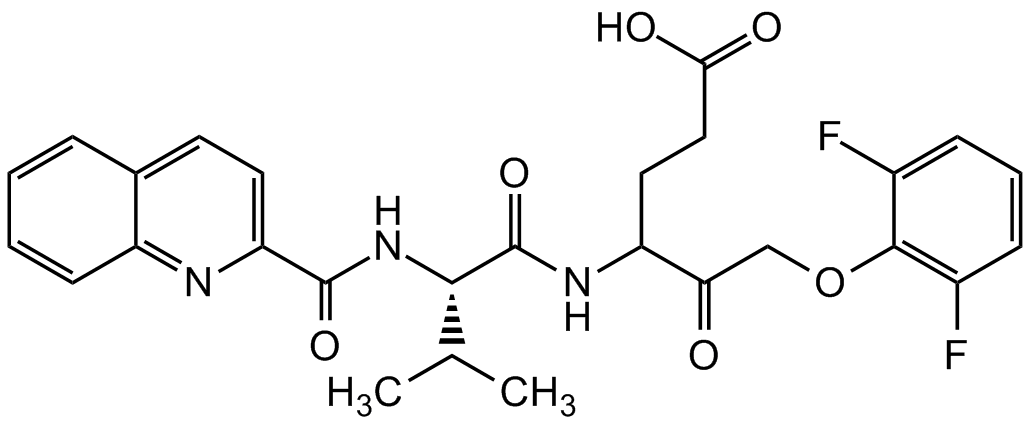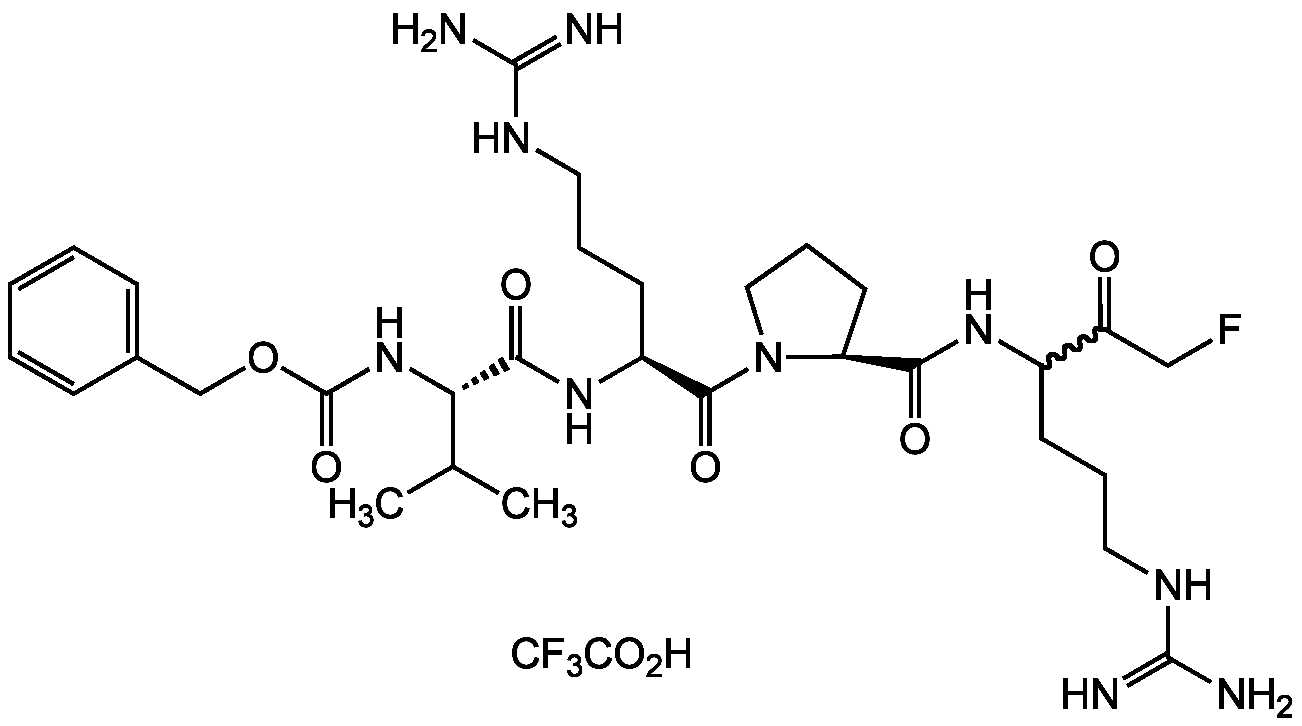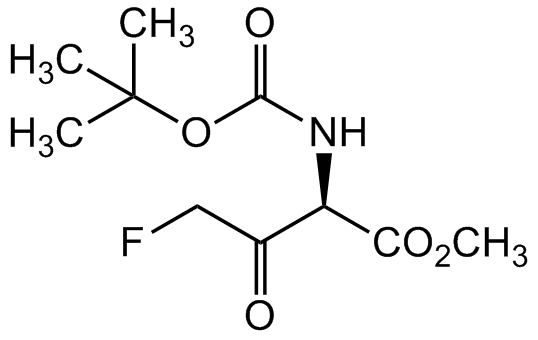
Chemical Structure
Z-VAD-FMK (Cell permeable)
AG-CP3-0002
Overview
- SupplierAdipoGen Life Sciences
- Product NameZ-VAD-FMK (Cell permeable)
- Delivery Days Customer10
- CAS Number187389-52-2
- CertificationResearch Use Only
- Estimated Purity>95%
- Molecular FormulaC22H30FN3O7
- Molecular Weight467.5
- Scientific DescriptionCell permeable, non-selective broad-spectrum caspase inhibitor [1, 3, 7, 8]. Binds irreversibly to the catalytic site of caspase proteases [1]. The peptide is O-methylated in the P1 position on aspartic acid, providing enhanced stability and increased cell permeability [1]. Inhibits ICE-family protease/caspase processing, leading to apoptosis and autophagy induction [2-4, 6, 9]. Decreases proteasome activity [5]. Potent inhibitor of caspase-1 activation in NLRP3/NALP3-induced cells [10]. Used in apoptosis and inflammasome studies. - Chemical. CAS: 187389-52-2 and 634911-81-2. Formula: C22H30FN3O7. MW: 467.5. Synthetic. Cell permeable, non-selective broad-spectrum caspase inhibitor. Binds irreversibly to the catalytic site of caspase proteases. The peptide is O-methylated in the P1 position on aspartic acid, providing enhanced stability and increased cell permeability. Inhibits ICE-family protease/caspase processing, leading to apoptosis and autophagy induction. Decreases proteasome activity. Potent inhibitor of caspase-1 activation in NLRP3/NALP3-induced cells. Used in apoptosis and inflammasome studies.
- SMILES[H][C@](NC(=O)OCC1=CC=CC=C1)(C(C)C)C(=O)N[C@@H](C)C(=O)NC(CC(=O)OC)C(=O)CF
- Storage Instruction-20°C,2°C to 8°C
- UNSPSC51202000

